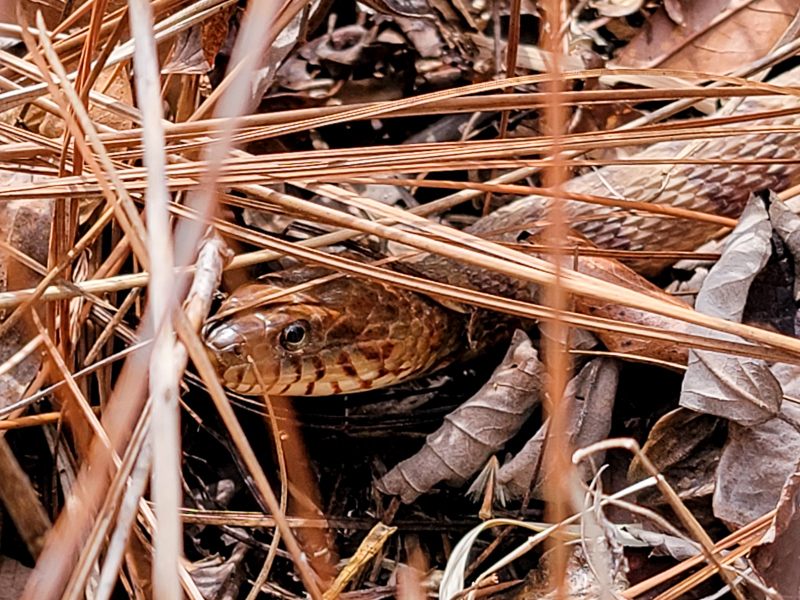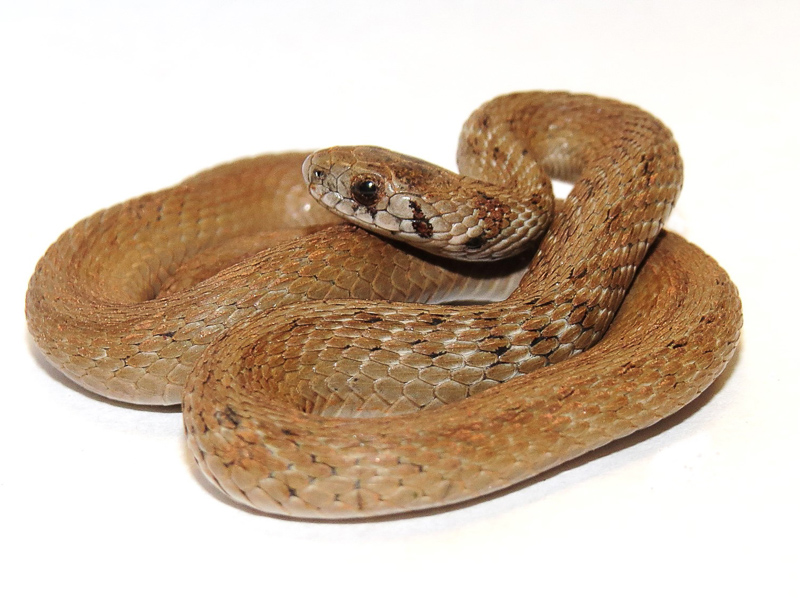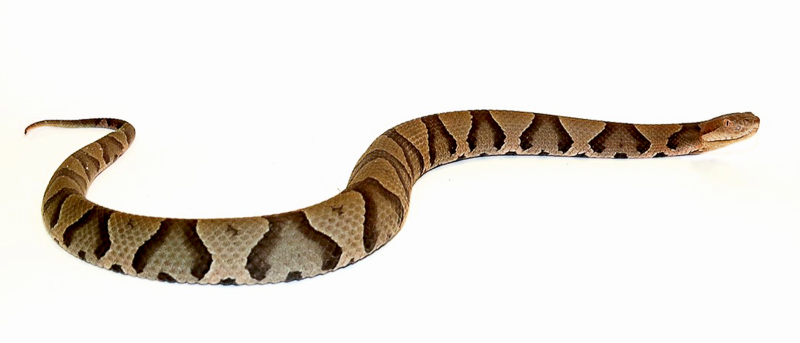Gardening Season is Snake Season
For immediate release ‐ March 25, 2022
Contact: Jon Pishney, 919.707.8083. Images available upon request
 Common (Northern) Watersnake. Photo © Lisa L. Yiannakis.
Common (Northern) Watersnake. Photo © Lisa L. Yiannakis.
As part of Reptile & Amphibian Month, Collections Manager for Live Animals Jeff Mette offers some advice about gardening during “snake season.”
This month, signs of spring are arriving in North Carolina. Early flowers are blooming. Chorus frogs are calling. Worried people are posting photos of snakes to social media. Odds are good that you’ll encounter snakes while gardening this year. Armed with some basic info, you can safely enjoy the garden and all the snakes that live there.
 Brown Snake. Photo: Jeff Beane/NCMNS.
Brown Snake. Photo: Jeff Beane/NCMNS.
What kind of snake is that?
Most of the snakes you encounter in the garden are harmless and beneficial. The little brown snake you find in the mulch might be a full-grown Brown Snake (Storeria dekayi), a slug-eating asset in any garden. It’s important to learn which venomous snakes occur where you live. The most common venomous snake in North Carolina is the Copperhead (Agkistrodon contortrix). They are frequently found in yards and gardens and every NC gardener should learn to recognize this snake by sight. Depending on where you are, there may be several other venomous snakes. If so, you should learn those, too.
Read more about venomous NC snakes on our FAQ and on herpsofnc.org/snakes
There are many resources for identifying snakes. If you can take a clear photo of the snake, then you should be able to get a quick and reliable ID from one of these sources:
- You can Ask a Naturalist at the Museum.
- Facebook users can try the Snake Identification group.
- Reddit users can try the What’s This Snake subreddit.
- You can also share your encounter on HerpMapper, and contribute to global knowledge of snake distributions.
- If you have the iNaturalist app (Android and iOS) you can upload your photo to get an almost instant identification from the built-in AI, which will present several possible IDs in descending order of probability. When you think you’ve got the correct ID, you can submit the photo and other information to iNaturalist and help scientists understand snake distribution better.
Practice safe gardening
There are two kinds of snake bites: unavoidable accidents and totally preventable bad decisions. Avoid the second kind by never attempting to capture or kill a venomous snake. Limit your risk of the first kind by practicing safe gardening: Learn the venomous snakes that live in your area. Wear closed-toe shoes.
Remember that snakes are secretive animals; you should never put hands or feet where a snake could be concealed. This means not reaching blindly to pull tall weeds; try raking first. When moving objects like logs, stones, brush piles and other potential snake hiding places, check underneath first. Be mindful of how snakes behave and especially where they hide, and you can reduce your risk.
 Copperhead. Photo: Jeff Beane/NCMNS.
Copperhead. Photo: Jeff Beane/NCMNS.
What to do if you encounter a venomous snake
Give the snake space. Snakes won’t chase you. Leave for a while and chances are the snake will be long gone when you return. If you must move a snake, try spraying with a garden hose or gently encouraging with a long-handled broom. No matter what, keep a safe distance.
What to do if you are bitten by a venomous snake
It happens. Every year, people are bitten by snakes while working in their gardens. Be ready for the worst by preparing this simple and effective first aid kit: your car keys and your cell phone. That’s it. If you are bitten by a venomous snake, stay calm, call 911, and go to the hospital. A clear photo of the snake may help in diagnosing and treating the bite, but don’t delay medical attention and absolutely don’t risk another bite.
If you have questions about snake bite, you can also call NC Poison Control at 1.800.222.1222. They can help you decide what to do in the event of a bite. Other first aid measures you can take in the event of a snake bite include:
- Gently washing the area with warm, soapy water.
- Removing any jewelry or tight clothing near the bite site.
- Keeping the bitten area still, if possible, and raised to heart level.
Read more from the CDC here.
Enjoy the garden
Remember: snake bites are rare. Fatalities are very rare. Practice safe habits this season. Enjoy your garden and the snakes!
For more information about our upcoming activities, conservation news and ground-breaking research, follow @NaturalSciences on Instagram, Twitter and Facebook. Join the conversation with #visitNCMNS.

